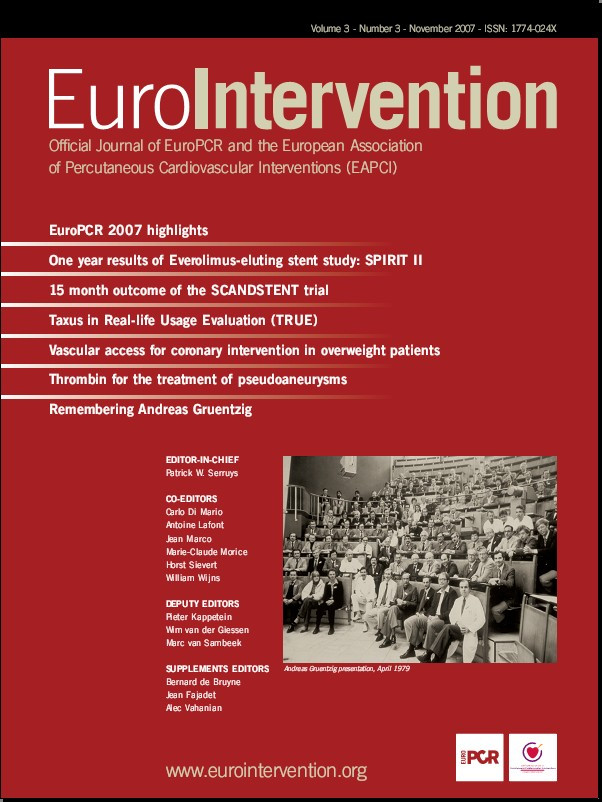Dear Colleagues,
On the 15th of September 1977, Andreas Gruentzig performed his first angioplasty. Thirty years later, on the 15th of September 2007, three hundred senior interventional cardiologists gathered in that same auditorium where Andreas broadcast live case demonstrations from the cath lab of the University Hospital in Zurich, Switzerland in 1978, 1979 and 1980.
All of us who attended this meeting were profoundly moved to be once again sitting here, on the same seats where we witnessed those live cases in 1978-1980. All of us experienced the same feeling of déjà vu, suddenly appreciating what has been achieved in since. And all of us could see, individually and with deep emotion, our careers passing before us in the blink of an eye, as if those intervening 30 years were nothing more than mere months and not decades. But time does indeed move on, and among those present there were some already enjoying retirement, while the rest of us will soon follow.
When you consider that there are 7.5 million individual patients who have been treated today with drug eluting stents – not even counting all those treated in earlier years by bare metal stents – you begin to understand the depth and lasting impact that this visionary master has had on the personal life of so many. Without any doubt, if Andreas Gruentzig were alive today, he would have been eligible for the Nobel Prize and join fellow giants of cardiology like André Frédéric Cournand, Werner Forssmann or Dickinson W. Richards.
Returning to this 30th anniversary meeting, the attendees were reminded of the luck that must be on your side as an operator, particularly in treating your first case. Adolph Bachmann was a heavy smoker, he spent many days in the CCU with unstable angina before stabilising. During his exercise tests before his treatment, ST elevations were present. Three days after the then successful procedure he still had some residual ST elevation during exercise testing. For some of us, it was the first time we learned about these facts and we were frankly flabbergasted by the luck of patient and operator. And so it is like this that history was written...
Many of us deplored the fact that young interventional cardiologists could not be there with us, participating as well in these two days of presentation and history which reflected the dedication and commitment, but above all the courage, of this first generation of interventional cardiologists.
The sense of comradeship during the two days was overwhelming. The presence of Andreas’s first wife and daughter, as well as so many pioneers of our craft, was exciting, touching and simply breathtaking. This meeting, broadcast on the internet, should be a source of inspiration for the young generation since it’s a complete mixture of ideas, convictions, innovation, linked to an unfailing stubbornness in pursing goals, a sure courage in approaching an infirm fellow man, and the honesty to report acute and late failures. From the very beginning ethics and credibility have been at very the core of this, our endeavour and should always remain there, today and into the future.

